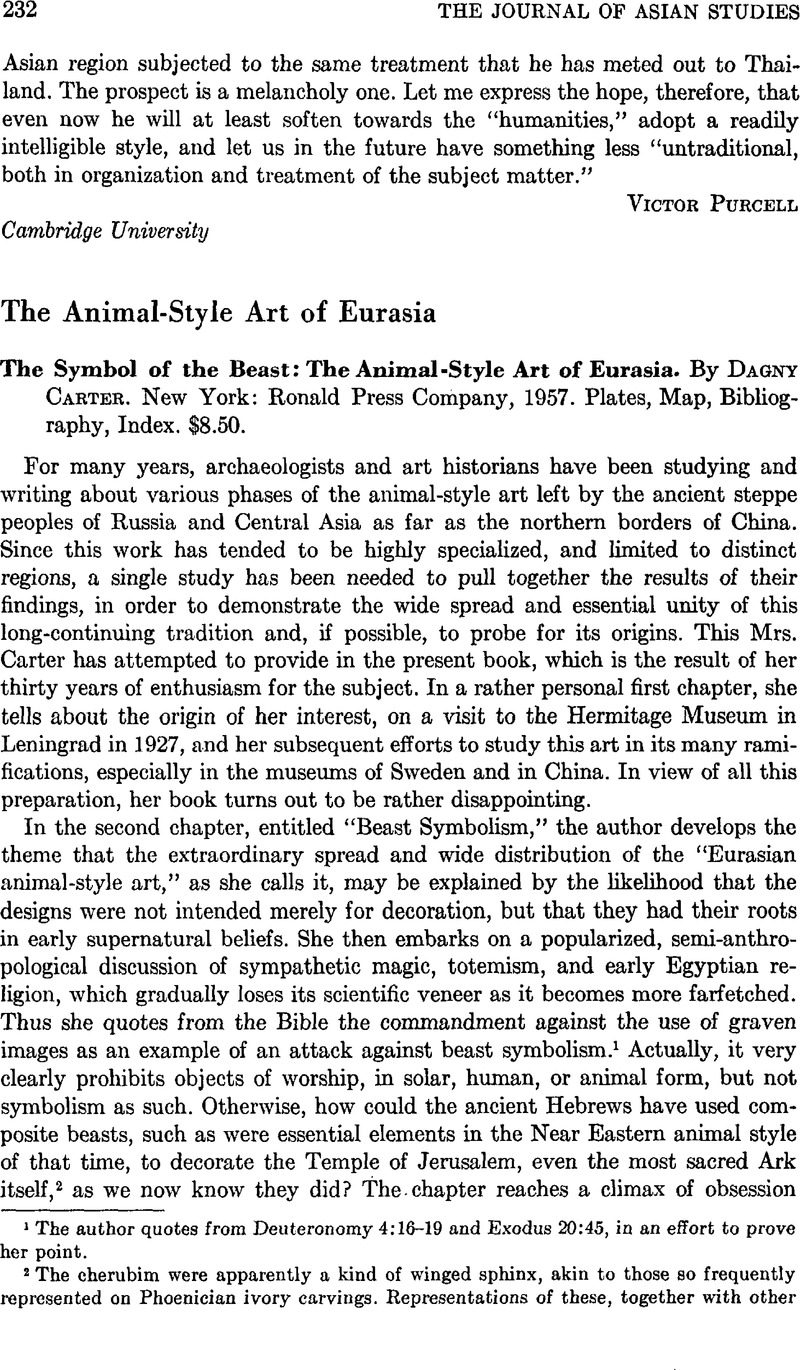No CrossRef data available.
Article contents
The Animal-Style Art of Eurasia
Review products
Published online by Cambridge University Press: 23 March 2011
Abstract

- Type
- Review Articles
- Information
- Copyright
- Copyright © The Association for Asian Studies, Inc. 1958
References
1 The author quotes from Deuteronomy 4:16–19 and Exodus 20:45, in an effort to prove her point.
2 The cherubim were apparently a kind of winged sphinx, akin to those so frequently represented on Phoenician ivory carvings. Representations of these, together with other natural symbols of trees and plants were apparently lavishly used in the decoration of Solomon's Temple in Jerusalem. See I Kings 6:23–35; Count d'Alviella, Goblet, The Migration of Symbols, new ed. (New York, 1956), pp. 152–153Google Scholar; and R. D. Barnett, ”Phoenician and Syrian Ivory Carvings,” Palestine Exploration Quarterly (Jan. 1939), pp. 17–18.
3 Ezekiel 1:4–10.
4 See Loud, G., The Megiddo Ivories, Chicago University Oriental Institute Publications, LII (Chicago, 1939), esp. Pl. 16Google Scholar.
5 See von Massow, W., “Die Kyseloslade,” Athenische Mitteilungen des Deutschen Archäologischen Institute, XLI (1916), Pis. 2–3Google Scholar. The illustrations of these show a winged sphinx or griffin (head missing), and several animal combat scenes showing lions attacking their prey.
6 For some animal figures in bronze from Urartu, see Barnett, R. D., “The Excavations of the British Museum at Toprak Kale near Van,” Iraq, XII (1930), Plates 5–22Google Scholar.
7 Mrs. Carter uses an alternative spelling, writing it Zawiyeh.
8 See n. 7.
9 The most characteristic types of Luristan bronzes are well illustrated in Godard, André, Lea Bronzes du Luristan, Ars Asiatica, XVII (Paris, 1931)Google Scholar. This book is not mentioned in Mrs. Carter's bibliography.
10 See the writer's review of his book in Natural History, XLVII (March 1941), 179.
11 Dr. Andersson had hyphenated this name, but it is properly written as two separate words.


